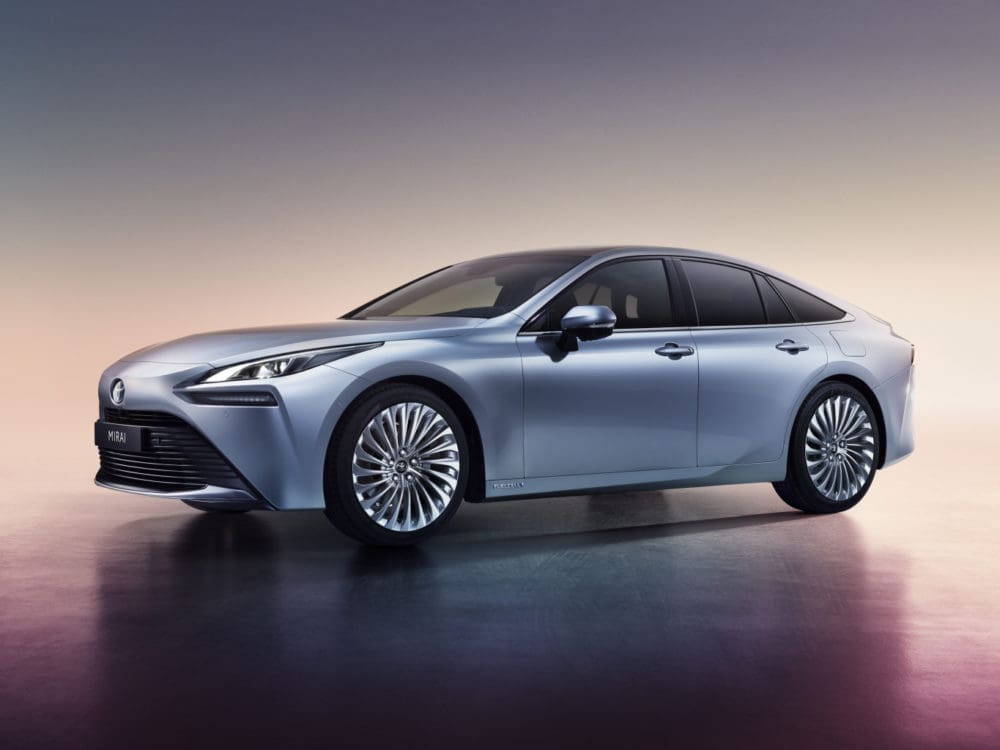



The Mirai has a driving range of around 300 miles, easy refuelling in a matter of minutes and no emissions other than pure water. Since launch, around 10,000 Mirai have been sold; at the same time, Toyota has actively supported the development of hydrogen fuel infrastructure in key markets.
At the 2019 Tokyo Motor Show, Toyota provided an early glimpse of the advances it is making with the new Mirai. Scheduled for launch in 2020, initially in Japan, North America and Europe, Toyota says the new Mirai will be much more than an eco-car, showing how its FCEV technology is no barrier to creating a vehicle that is rewarding to drive and beautiful to look at.
Toyota is targeting a 30 per cent increase in Mirai’s driving range through improvements to the fuel cell system and the use of larger on-board hydrogen tanks. There are now three tanks – one long, two short – which together increase the fuel capacity by around one kilo of hydrogen compared to the current model.
Yoshikazu Tanaka, the new Mirai’s Chief Engineer, said: “We have pursued the goal of making a car that customers will feel they want to drive all time, a car that has an emotional and attractive design and the kind of dynamic and responsive performance that can bring a smile to the driver’s face.
“I want customers to say ‘I chose the Mirai not just because it’s an FCEV, but because I simply wanted this car; it just happens to be an FCEV.’ We will continue our development work focusing on that feeling, and we hope that with the new Mirai we will be a leader in helping realise a hydrogen energy society.”
The new Mirai is being constructed on Toyota’s latest rear wheel drive modular platform, which was engineered to accommodate different powertrains – including a hydrogen fuel cell – at the outset. Toyota says it gives the new Mirai a higher degree of body rigidity, which contributes to greater agility and responsiveness, and a lower centre of gravity, which makes for nimble, rewarding handling.
As well as extending the potential driving range, improvements in the performance of the fuel cell system are claimed to give the rear-wheel drive Mirai “linear, smooth response when pulling away and an elegant driving feel, with unity between the driver’s throttle inputs and the car’s acceleration”.
© Motorworld Media 2023
Registered Office: 4 Capricorn Centre, Cranes Farm Road, Basildon, Essex. SS14 3JJ
Company Number: 8818356
Website designed by Steve Dawson